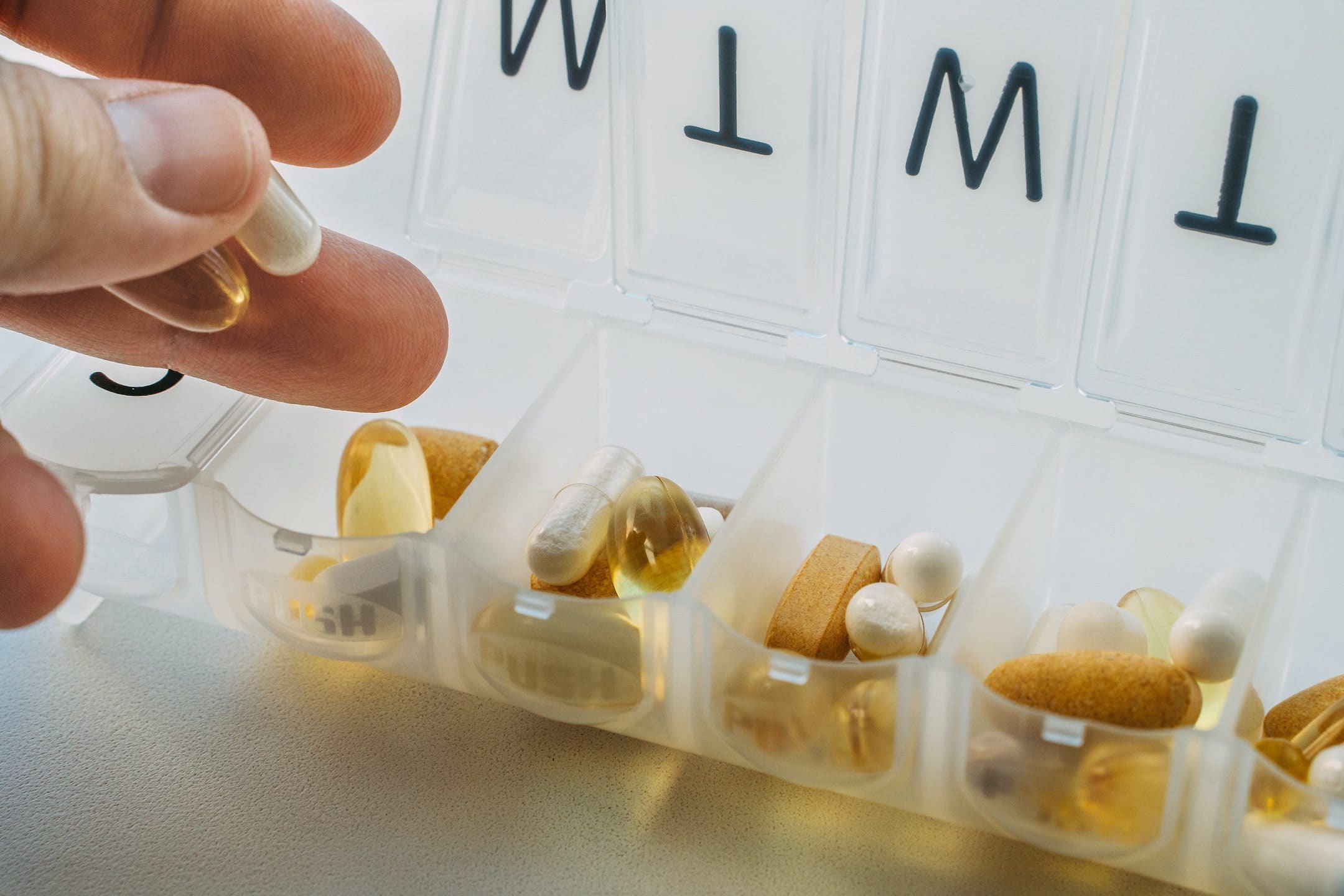Around 8–12% of couples worldwide experience difficulty conceiving, referred to as infertility. Of those couples, 40–50% struggle with male factor infertility, which could be caused by sperm-related conditions such as oligospermia (low sperm count) and azoospermia (zero sperm count).
Hearing “infertility” and “low sperm count” can feel disheartening, as if having biological children is impossible. But that’s not true. There are many ways you can pave a path towards parenthood, even if you are diagnosed with oligospermia.
In this guide, we’ll cover everything you need to know about oligospermia: causes, diagnosis, treatment methods, and more.
Takeaways:
- Those with oligospermia are still able to conceive, though conception may be more difficult or take longer.
- Oligospermia is often diagnosed through a semen analysis. Once diagnosed, further testing may be necessary to understand the root cause.
- Lifestyle factors — like smoking, drinking, diet, and exposure to chemicals and toxins — can increase a person’s risk of oligospermia.
- Oligospermia treatment methods will vary depending on the cause of your oligospermia.
What is oligospermia?
Oligospermia, also known as oligozoospermia, is when a person’s sperm count falls below the World Health Organization’s (WHO) classification for healthy sperm counts: 15 million sperm per milliliter of semen. In simple terms, oligospermia is characterized by low sperm count and can have an impact on your ability to conceive naturally.
Depending on your sperm count, you may be diagnosed with a case of mild, moderate, or severe oligospermia:
- Mild oligospermia: 10–15 million sperm per mL of semen.
- Moderate oligospermia: 5–10 million sperm per mL of semen.
- Severe oligospermia: 0–5 million sperm per mL of semen.
- Aspermia or azoospermia: Absence of sperm in semen.
How low sperm count affects male fertility
Having a lower sperm count doesn’t completely rule out the possibility of naturally conceiving, but it does decrease your chances of conception.
Fertilization is a “race to the top” of the female reproductive system, from the vagina to the fallopian tubes, where sperm meet the egg and fertilization occurs. In a healthy person without oligospermia, anywhere between 80 and 300 million sperm cells are released per ejaculation.
However, most are eliminated along the way. Any abnormal or otherwise defective sperm are likely to die on this journey, along with a good percentage of healthy sperm. In fact, less than 1 in a million from the original ejaculate will reach the egg at the time of fertilization. That’s why it’s important to start with a high number of sperm, and why low sperm count can affect conception.
Pregnancy rates have been shown to increase as sperm count increases. A study observed that the average pregnancy rate of couples in which the male partner had a sperm count between 5 and 60 million/mL was 50%. The pregnancy rate increased to 70% in couples with average sperm counts over 60 million/mL.
Another study that observed 308 men with oligospermia concluded that those with a sperm count of over 2 million sperm per mL of semen had a 22.1% chance of natural conception, provided that other sperm parameters were normal. Alternatively, in cases where sperm count was less than 2 million per mL of semen, natural conception became rare (1.6%).
How is oligospermia diagnosed?
The primary diagnostic test for oligospermia is a semen analysis. During a semen analysis, a sample of semen is examined by a lab scientist under a microscope, to determine sperm count as well as sperm quality. Two abnormal semen analyses in a row are typically required to diagnose a condition like oligospermia or azoospermia.
For the most part, a person will never realize they have oligospermia until they begin trying to conceive and experience difficulty. However, proactive sperm testing can make this process more efficient. Instead of waiting it out in the unknown, there’s the option of ordering an at-home semen analysis kit. With Legacy, you can schedule a virtual appointment with a fertility specialist who will review your results and answer your questions.
See our guide to sperm testing.
What causes oligospermia?
It’s natural for sperm count to fluctuate throughout your life, especially as you age. But there are also conditions and lifestyle factors that can increase a person’s risk of oligospermia.
Varicocele
Enlarged veins within the scrotum, known as varicocele, can create oxidative stress, disrupt proper blood flow to the testes, or lower testosterone production — all factors that can negatively impact sperm count. Varicocele is fairly common, affecting roughly 15% of men. Varicocele usually develops during puberty and often goes unnoticed, since symptoms are typically mild.
Exposure to heat
Exposure to heat can create oxidative stress, which has been shown to cause damage to sperm. Heat stress — from sitting for long periods of time every day, placing laptops or other heat-producing devices near your genitals, using saunas or hot tubs, or wearing tight clothing — is correlated to a decrease in sperm count, motility, and viability.
Exposure to toxins and radiation
Exposure to radiation and to substances like pesticides, lead, metals, and petrochemicals can negatively impact sperm count. People who work in high-risk environments where they are regularly exposed to these dangers have been shown to have lower sperm count and quality. If you work in the military or the agriculture, herbicides, plastic production, tobacco processing, or welding industries (among others), you may be at greater risk of developing low sperm count.
Sexually transmitted infections (STIs)
STIs can cause fertility issues such as oligospermia. An active bacterial infection or virus can negatively impact your reproductive system, even if you don’t experience any symptoms. For example, HPV — the most common STI — has been shown to impact sperm production, even though it does not cause symptoms in many men. In one study, 75% of men who tested positive for HPV had abnormal semen analysis results, compared to only 44% of men who tested negative for HPV. It’s important to get tested regularly and get treated immediately if you test positive for an STI.
Hormone imbalance
There are many hormones that drive male fertility, like testosterone, follicle-stimulating hormone, and luteinizing hormone. These and a few other hormones play a key role in sperm production. If there’s an imbalance in any of these hormones, that could lower your sperm count (along with other sperm health parameters).
Idiopathic oligospermia
In some cases, a causative factor may not be found for low sperm count, which is referred to as “idiopathic oligospermia.” (Idiopathic means we don’t know the root cause.) When a cause cannot be found, it can be difficult to recommend treatment to increase sperm count. Generally, making healthy lifestyle changes can help improve sperm, along with your overall state of health. If that doesn’t help with fertilization, assisted reproductive technologies, like intracytoplasmic sperm injection (ICSI), have been shown to provide promising success rates.
How to treat oligospermia and increase sperm count
Treatment methods for oligospermia will vary depending on your case.
- If a varicocele is the cause of your oligospermia, you may need surgery to close off enlarged veins to redirect blood flow to the testes.
- If a hormone imbalance is detected, you may require hormone treatments to restore a healthy balance and improve sperm production.
- If you have a bacterial infection or virus, then you may need a round of medication (like antibiotics) to clear the infection and inflammation. Depending on how far along the infection is, the medication may not help improve sperm count but can prevent even greater drops in sperm count.
- In most cases, including when you have a case of idiopathic oligospermia, you may be able to increase sperm count by making healthy lifestyle changes.
Getting pregnant with oligospermia
In some cases, the treatment methods outlined above can only do so much. If you have oligospermia and have not been able to conceive on your own, fertility treatments can help.
- Intrauterine insemination (IUI): This is a fertility treatment where sperm is washed (processed) and placed directly into a patient’s uterus. Studies show that IUI can provide an improved pregnancy rate for those with mild to moderate oligospermia. Although pregnancy rates tend to be lower when using IUI compared to IVF and ICSI, data supports IUI as an effective, simple, and low-cost treatment. Because IUI is one of the least invasive and least expensive assisted reproductive techniques, it’s a good first-line treatment option before attempting more invasive or costly methods.
- In vitro fertilization (IVF): This technique involves removing oocytes from the ovary and combining them with sperm to facilitate fertilization outside of the body. Once fertilized, the embryo is transferred into the uterine cavity. IVF success rates can vary depending on the age of the female partner, but one study found that among men with oligospermia, IVF resulted in the highest pregnancy rate.
- Intracytoplasmic sperm injection (ICSI): This is a treatment method where a single live sperm is injected directly into an egg. One study reports a pregnancy rate of 36.4% for people with oligospermia. For people who experience low sperm count because of an obstructive cause (like those with obstructive azoospermia), ISCI can be a promising assisted reproductive technique.
Remember, it’s possible to conceive with oligospermia. The first step towards a plan of action is getting a semen analysis. From there, you can choose treatment methods or explore ways to increase sperm count.



